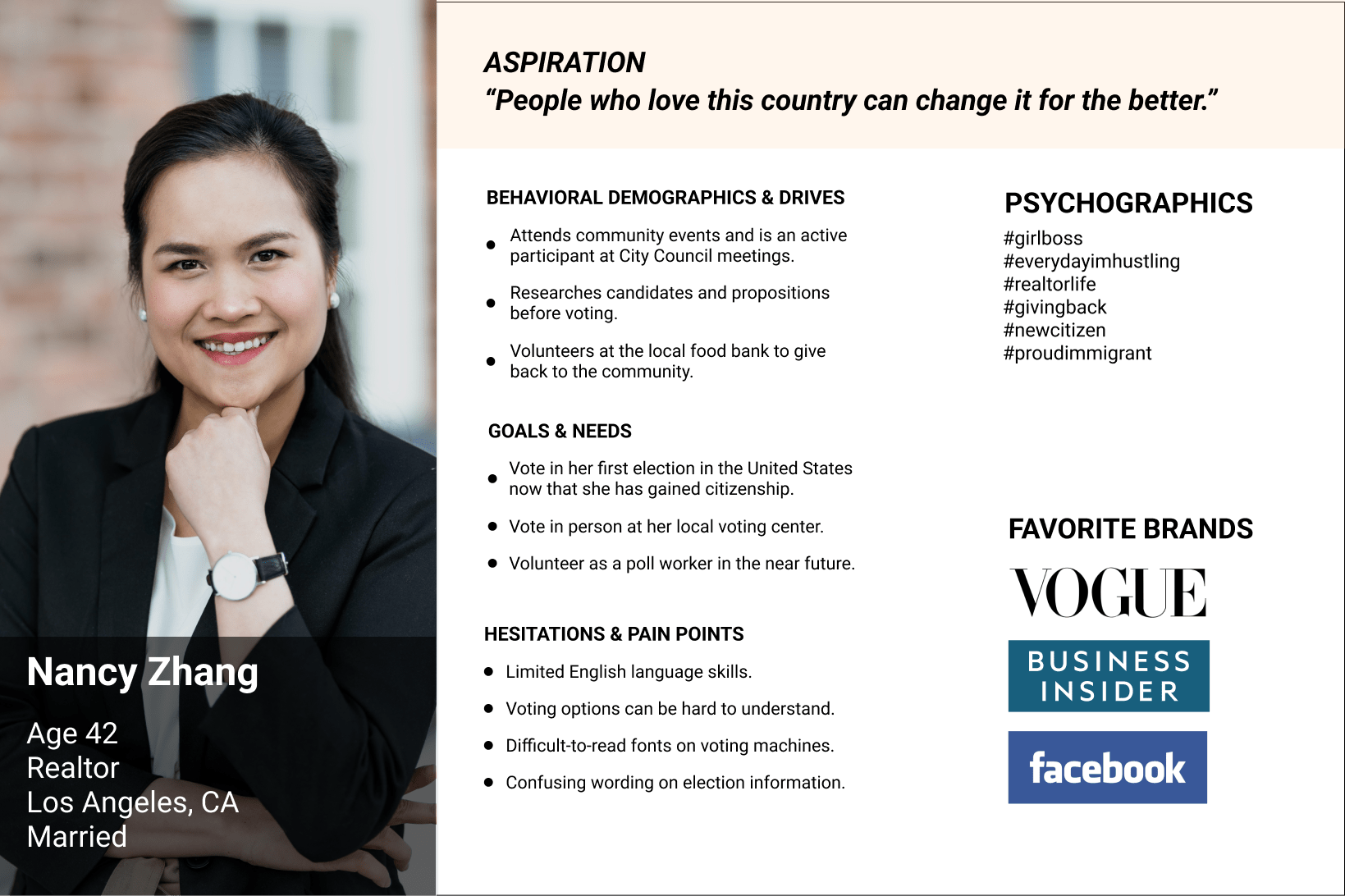
Voting Solutions for All People: Increasing Democracy Through Research and Accessibility
The Challenge:
Los Angeles County is the largest and most complex County election jurisdiction in the United States. However, its paper punch voting equipment was outdated and provided limited access and language options for many voters. Voting Solutions for All People (VSAP) was created to modernize the way LA votes and make in-person voting accessible to all residents of LA County.
The Solution:
As part of a 6-member team working in an agile environment, I conducted user research and lab-based user testing. Our approach was data-driven, with a focus on addressing the needs of voters with disabilities and limited English proficiency. Our ultimate goal was to increase overall voter turnout in LA County
My Contributions:
-
User Research
-
User Testing
-
Data Collection and Analysis
-
Focus Grouping
-
Iteration
The Team:
-
6 UX researchers (That’s me!)
-
2 project managers
-
1 head research strategist
Timeline:
9 months, from start to launch
*To comply with my non-disclosure agreement I have omitted and obfuscated confidential information in this case study all information in this case study is my own and does not necessarily reflect the views of Smartmatic.
1) Understanding the Challenge
Kickoff: How Might We Increase Voter Turnout in LA County?
My team was tasked with conducting research and testing on the newly completed VSAP software and the BMD (Ballot Marking Devices) hardware prototypes. Our goal was to ensure that VSAP was ready for launch in the March 2020 primary election.
To begin, we delved into the initial research and insights about voters in LA County. We dedicated weeks to understanding the intricate details of the voting experience, as well as the needs, wants, and pain points of voters in LA County, which were uncovered during the Phase 1 research.
Voters Liked
- 9 in 10 voters felt a significant level of trust in the integrity of Los Angeles County’s elections.
- A majority of voters surveyed value simplicity and ease when casting their ballots.
Voters Felt
- 1 in 3 voters ranked accuracy and ease of use as their top priorities for new voting machines.
- 55% of voters felt a new voting system was “not needed” and “unnecessary”.
Voters Wished
- 4 of 5 voters wanted paper ballots included as part of any new voting system in Los Angeles County.
- Voters rated a blended touchscreen interface with an opscan paper ballot as their preference for new voting system machinery.
Prioritizing Voters with Disabilities and Limited English Skills
The most intriguing discovery from our initial research was that voters with disabilities, Asian voters, and Latinx voters prioritize the importance of an “easy-to-use” voting system more than other surveyed groups.
This illuminated that the largest barrier to increasing voting in LA County was a glaring and fundamental lack of accessibility.
Armed with this data, our team shifted its focus to determining whether the VSAP software and BMD hardware were enhancing accessibility for all through rigorous user research and testing.
My team discovered that the largest barrier to increasing voter turnout in LA County was a fundamental lack of accessibility.
2) Empathizing with Voters
Bringing the Data to Life: User Personas
During the Phase 1 research, my team and I conducted brainstorming sessions to synthesize the data we had gathered. In these sessions, I created user personas and corresponding user scenarios.
Prioritizing the needs of users with accessibility requirements and limited English proficiency was our main objective.
Before proceeding to user testing, we aimed to gain a comprehensive understanding of users’ motivations, constraints, and pain points. This approach allowed us to establish a strong foundation for success.
Meet New Citizen Nancy: A Realtor Who Loves Her Community
Let’s Vote with Nancy
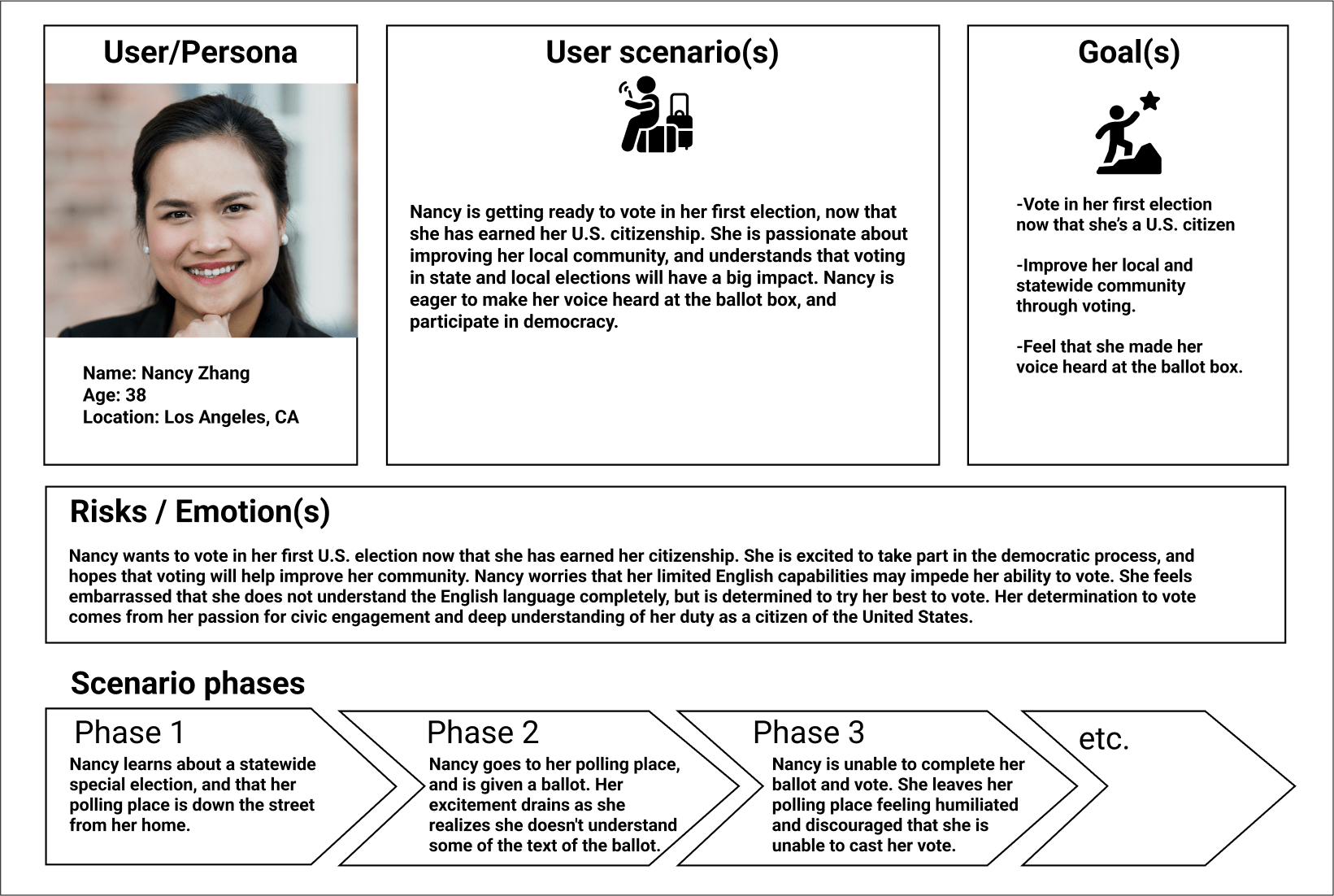
Meet Tenacious Tyler: A Musician Ready to Rock the Vote
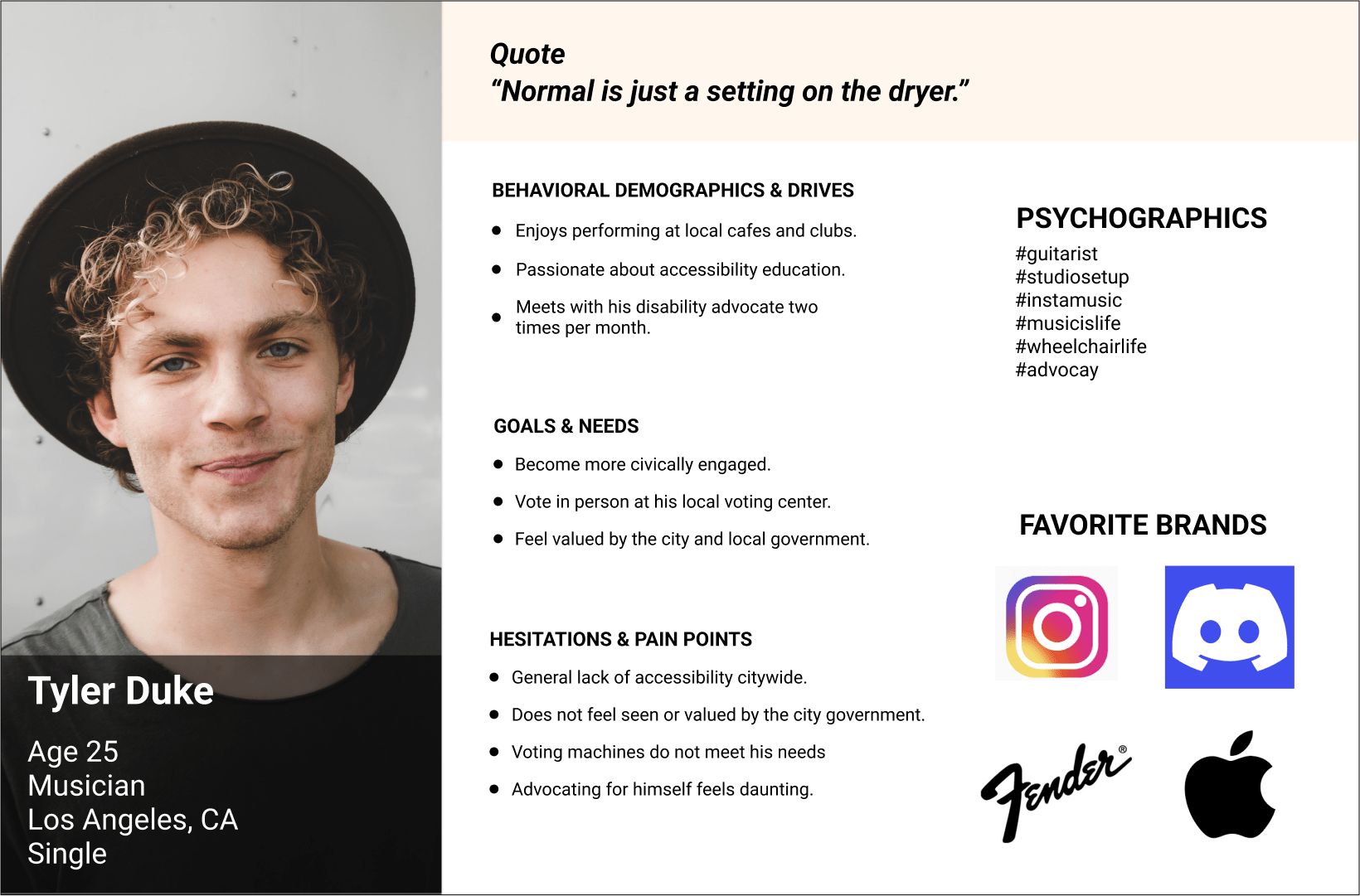
Let’s Vote with Tyler
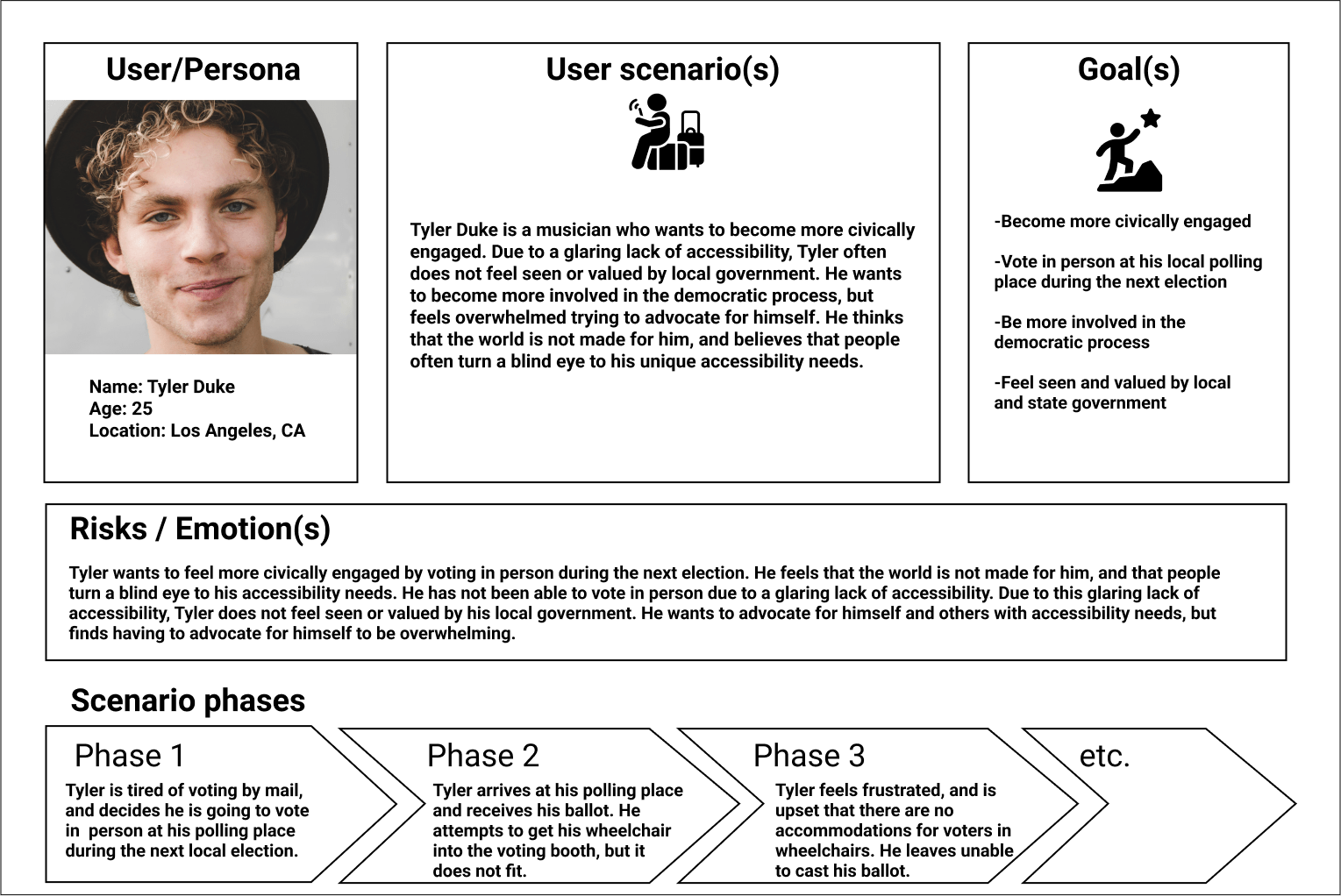
3) Research Methods and Processes
Our User Research and Testing Plan
With a deep understanding of the launch team’s research and findings under our belts, my team set about creating our user testing plans. We broke down our core research methodologies into three main categories.
Lab Testing
Voters were randomly selected from LA county to come to the lab to test VSAP software and BMD hardware on high level prototypes. We asked lots of questions to find out what voters were thinking and feeling about their overall voting experience.
User Interviews
Next, we conducted one on one user interviews. Our goal was to learn more about voter’s perspectives on the VSAP software and BMD hardware, and gather data on how we can help motivate voters to take part in the electoral process.
Mock Elections
To determine what voters were thinking, feeling, and doing in a real life election, my team held multiple mock elections in conjunction with the developer team. We hoped to learn about voter engagement through every step of the voting process.
We wanted to determine whether the VSAP prototypes were truly accessible to all voters and easy to use.
Asking the Right Questions: User Interview Plan
To gain insights into voter experiences with the VSAP prototypes, the team devised a set of essential questions to ask during and after user testing. We aimed to assess the prototypes’ accessibility for all voters and identify strategies to boost voter turnout. Here are some of the key questions we posed:
- Do you need more instructions or interactions per screen to understand how to cast your ballot?
- How would you rate your overall VSAP voting experience? What is working and what can be improved?
- What would make you feel more confident in the overall VSAP voting process?
- What motivates you to vote?
- How would you like your overall voting experience to feel?
- What do you prioritize most when it comes to voting and voting equipment?
- What would make voting more accessible to you?
4) Testing and Findings
Lab Tests: Round 1 User Testing
After conducting tests on VSAP, we made the following discoveries:
1. Translation Errors: While the VSAP software performed well in English and Spanish, we found numerous translation errors in the 17 other languages. These errors caused confusion and frustration among our voters.
2. Language Switching Issues: Although the VSAP software performed well in individual lab tests, it tended to malfunction and freeze when users had to toggle between various languages during the mock election.
3. Accessibility Aide Problems: We observed several issues with the accessibility aides. Deaf users experienced significant lag with the dialogue, while quadriplegic users encountered frequent errors with the Sip-And-Puff accessibility aide due to a lack of sensitivity.
4. Voter Requests: Voters expressed a desire for an easy way to switch languages and have the option to call a poll worker for assistance on each screen.
These findings highlighted the need for improvements in the VSAP software and hardware to ensure a smoother voting experience for all users.
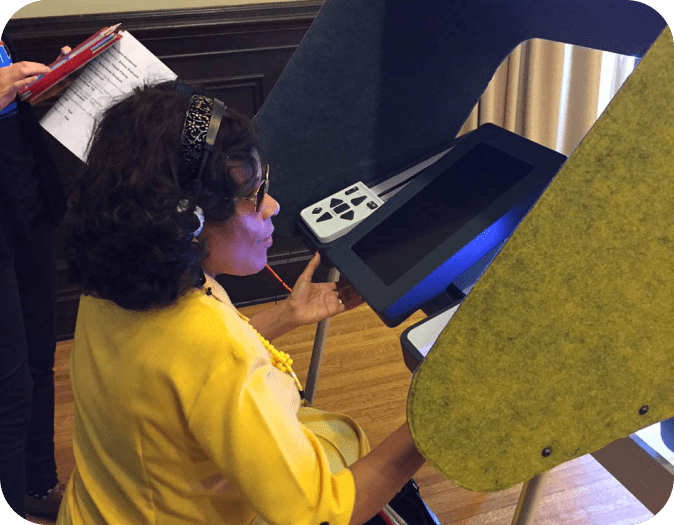
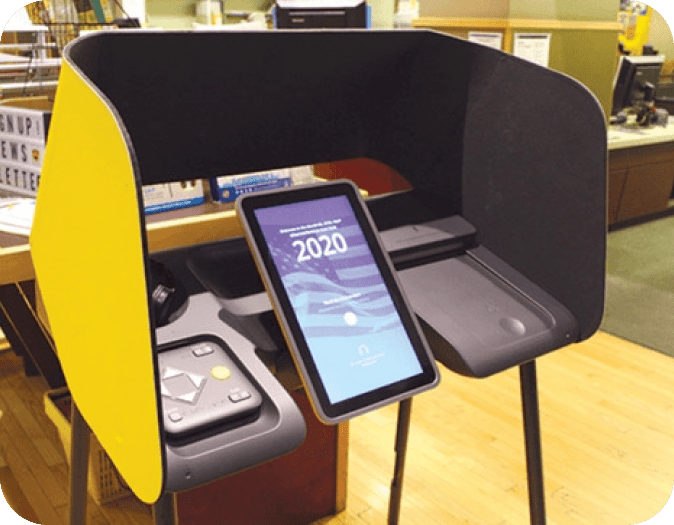
Organizing Our Findings: Affinity Diagramming
One of my favorite things to do as a UX researcher is to create order from chaos. After completing our first round of user testing, I took the initiative to lead my team in an affinity diagramming exercise.
Once the diagram was complete, I transferred it to a Miro board, which allowed us to easily share it with the developer and hardware teams. It was crucial for us to provide this information to them so that they could iterate on the next prototype.
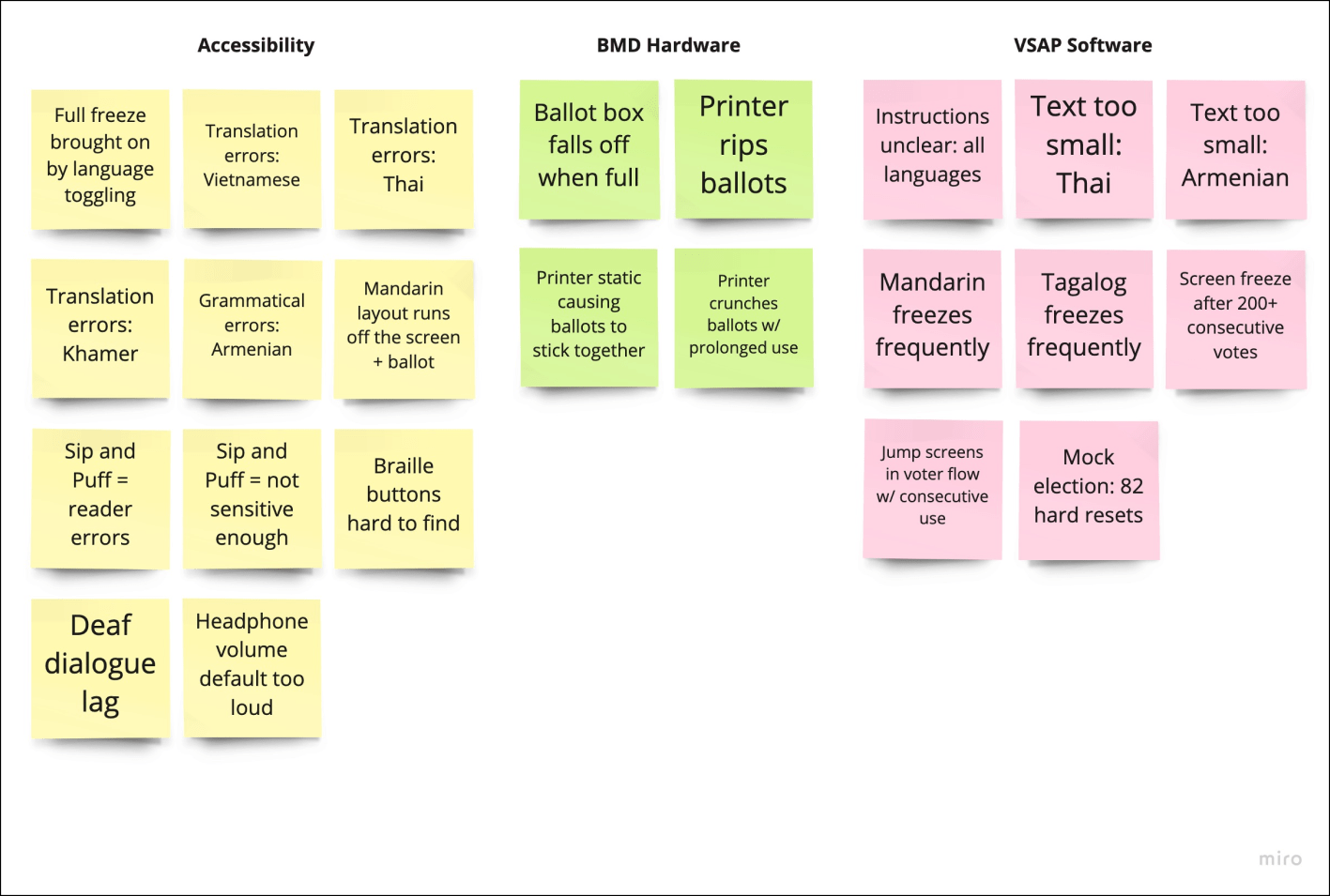
Mock Elections: Round 2 User Testing
With changes implemented thanks to the hard work of our developer and hardward teams, VSAP iteration 4 testing was a smashing success! For this round of user testing, we held more mock elections so that we could observe voters and film them as they went through each step of the voting user flow for analysis.
Language Options: Voters were delighted with the wide range of language options available for voting. They particularly appreciated the addition of a language button, which allowed them to change the language at any point in the voter flow.
Improved Readability: Voters expressed their satisfaction with the larger text size across all languages, as it significantly enhanced readability.
Helpful Additions: The inclusion of the languages button and help button on every screen was well-received by voters, who greatly appreciated these additions.
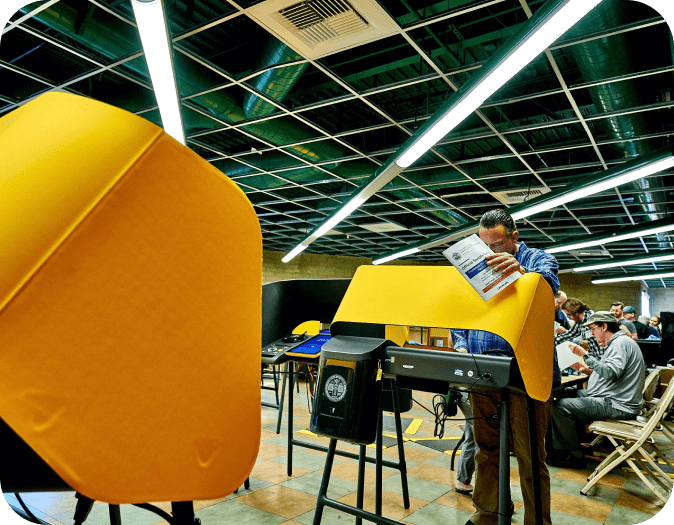
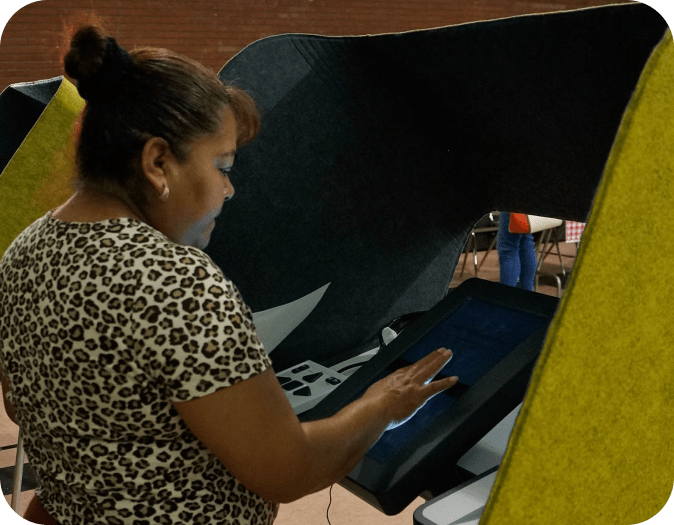
Key Findings
Community
Voters want to feel that they are a part of a larger community. They value feeling that voting makes them a part of something bigger. Voters valued inclusion and were delighted that there were 19 unique language options to choose from.
Usability
Voters prioritized ease of use from start to finish. Voters felt the VSAP touch screen was friendly and intuitive. Plain language contributed to high voter confidence in the VSAP. 9 out of 10 voters preferred VSAP to other voting systems.
Integrity
Paper ballots lead voters to feel that the VSAP voting is secure. Voters liked the integration of touch screen technology with the integrity of a paper ballot. Locked ballot boxes attached to the BMDs let voters know that ballots were safe and tamperproof.
We discovered that voters want to feel like they are a part of something bigger, and that their vote has a tangible impact on their community.
What I Learned
Accessibility is Essential to Democracy
Working on the VSAP project as a user researcher was an incredibly rewarding experience. I take great pride in knowing that my work directly contributed to increasing democracy and making Los Angeles a more inclusive place to vote. The impact that this project had on the city and its people is not lost on me. Throughout the ever-changing process of bringing VSAP to voters, I was able to showcase my empathy and adaptability.
This project also provided me with a valuable opportunity to gain insight into the challenges faced by my neighbors and fellow Angelinos. I discovered that many of the things we often take for granted, such as the ease of voting without obstacles, are not always accessible to everyone. This realization emphasized the importance of accessibility as a core value. I now carry this understanding with me in every project I undertake.
Check Out More Case Studies
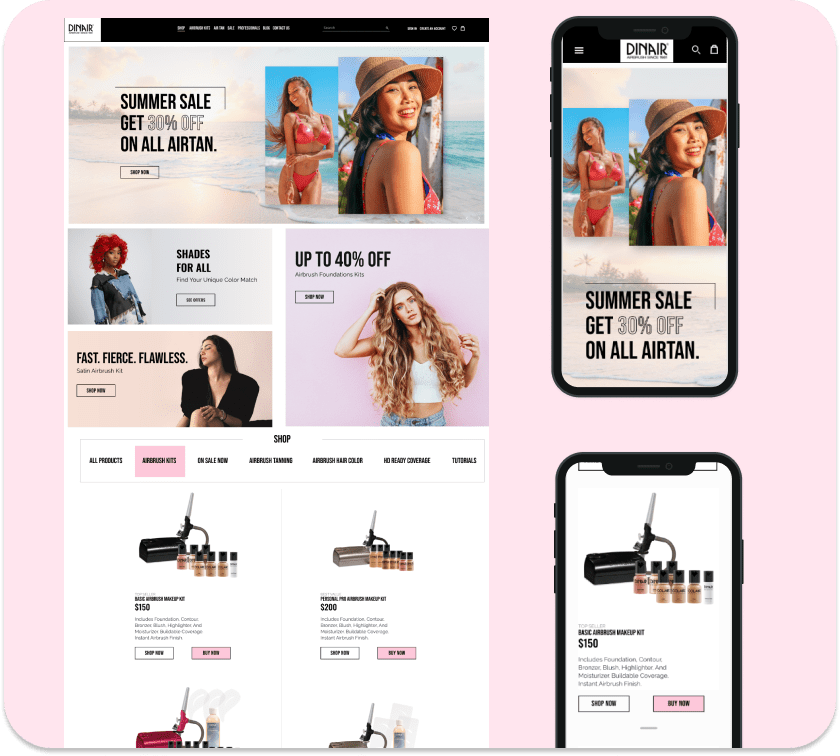
Dinair Airbrush Makeup
Dinair Airbrush Makeup is a woman owned small business, created by Dina Ousley. Leading a team of 4 visual designers, I set out to increase online sales by improving customer’s e-Commerce check out experiences. Utilizing design thinking and qualitative data, we achieved a 20% increase in sales and more digital engagement within 2 months of launch.
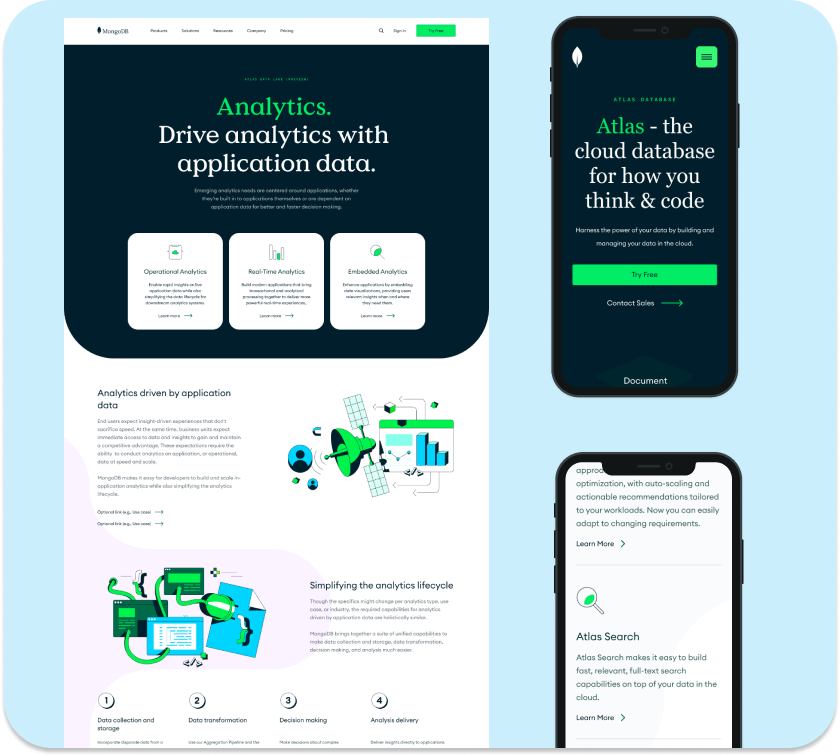
MongoDB
MongoDB is the leading NoSQL database used to build highly scalable Internet and mobile applications. As part of the Web UX team, I thought deeply about how we interacted with our diverse user base. While internally, increased collaboration with other teams working on the project. Culminating in a 40% increase in our FT/PT CVR conversion rate.
(Password Protected )
